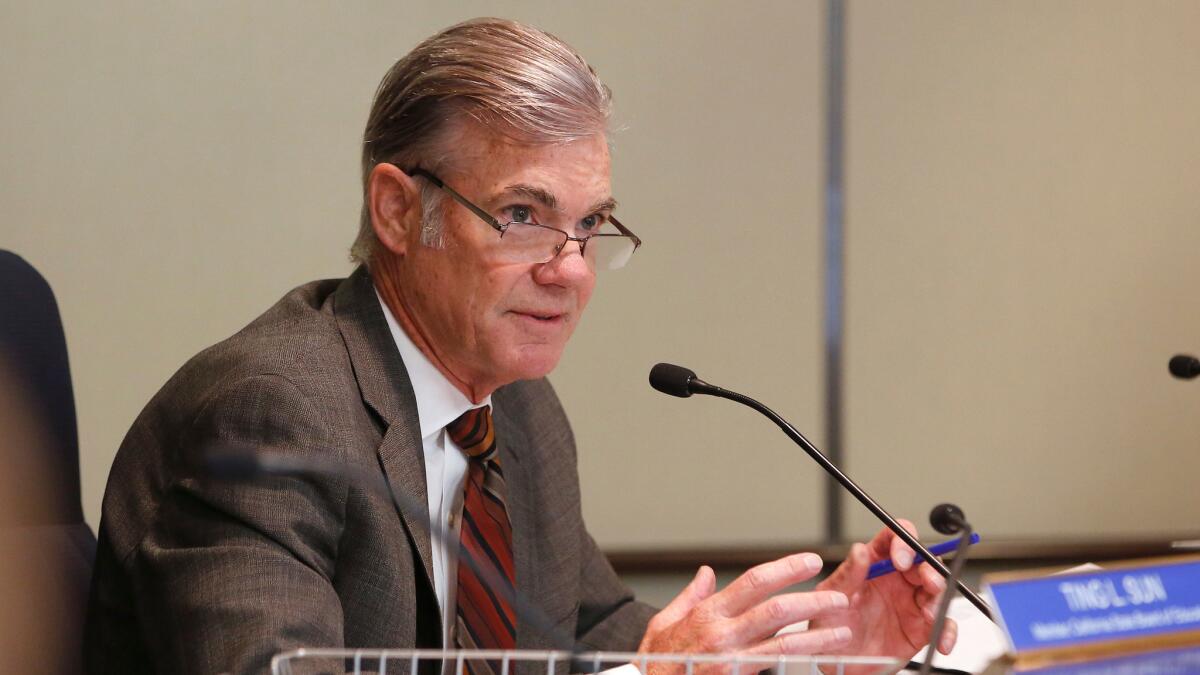Editorial: Designating an acting governor when the actual governor leaves California is an archaic and pointless tradition

California Gov. Tom Torlakson this week declared a state of emergency in Los Angeles County in response to the destructive Sand fire that burned more than 38,000 acres and at least 18 structures….
Wait a minute. Who? Isn’t Jerry Brown governor of California?
For the record:
2:50 a.m. April 25, 2024An earlier version of this editorial incorrectly said that Brown could reverse the appointment of Armand Arabian only because he had not been confirmed by the state Senate. Nominees to the Court of Appeal and the state Supreme Court are confirmed by the Commission on Judicial Appointments.
Ordinarily, yes. But not on Tuesday when Torlakson, in his capacity as acting governor, made the announcement. The state constitution requires that when the governor leaves the state, as Brown did Monday to attend the Democratic National Convention in Philadelphia, another elected official must take over the job. Normally, that duty falls to the lieutenant governor. But Lt. Gov. Gavin Newsom also left the state, as did Senate President Pro Tem Kevin de León (D-Los Angeles), along with the five other elected leaders who would stand in as acting governor before Torlakson.
If the president ... can run the country from another continent, there’s no reason the governor can’t run California from elsewhere in the U.S.
The officials filling in for the top guy (there has never been a top gal) typically don’t use their temporary power other than to issue a press release or two. It would be unseemly — and undemocratic — to do much more.
But it would be legal. The law does allow acting governors to use the full power of the office while they have the title, as former Republican Lt. Gov. Mike Curb famously demonstrated during Jerry Brown’s second term as California governor. Curb made appointments, signed bills and even created commissions. In March 1979, he went too far and appointed Armand Arabian to a vacant seat on the Court of Appeal when Brown was in Washington. Brown unappointed Arabian upon his return. (Don’t feel too bad for the guy. Gov. George Deukmejian later successfully appointed Arabian to the state Supreme Court.)
Brown could reverse the appointment only because Arabian had not been confirmed, the state Supreme Court ruled later, finding that Article V, Section 10 of the California Constitution gives complete gubernatorial power to the lieutenant governor when the governor is physically absent from the state. Presumably, this finding would extend to anyone designated acting governor.
That’s alarming. No offense to Torlakson, but no one elected him to run the state.
While it is important there is a succession plan in case a sitting governor dies or otherwise becomes incapacitated, there is no practical reason in this hyperconnected era to hand power to a replacement every time the governor sets foot across states lines. (Let’s not even imagine the ensuing silliness if a governor, while on vacation in South Lake Tahoe, had to designate an acting governor every time he — or she, it could happen — wants to hit the casinos down the street in Stateline, Nev.)
This particular rule was written in the pre-digital era, when you really had to be physically present to run the state. Now, it’s just an unnecessary tradition.
Brown returned to California, and resumed his powers Thursday. But his absence highlighted this archaic tradition, which he and other state leaders should purge from the constitution. If the president of the United States can run the country from another continent, there’s no reason the governor can’t run California from elsewhere in the U.S.
More to Read
A cure for the common opinion
Get thought-provoking perspectives with our weekly newsletter.
You may occasionally receive promotional content from the Los Angeles Times.






